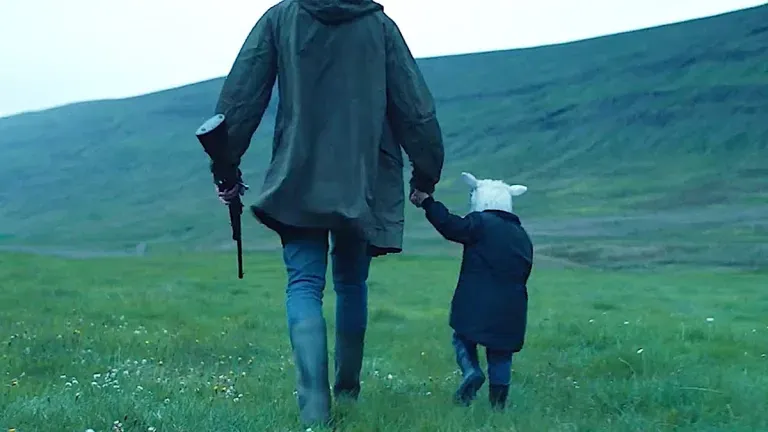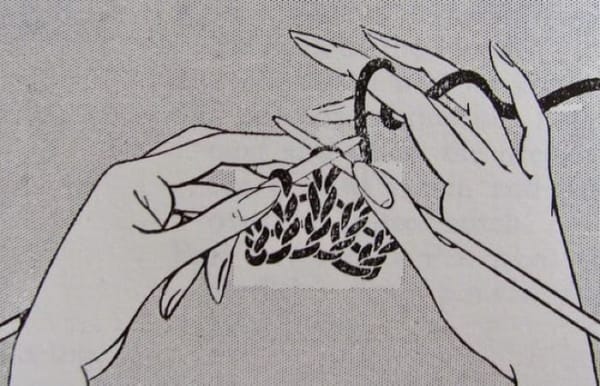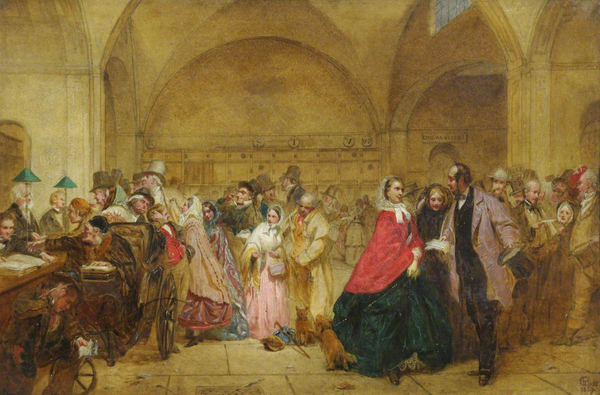Folk Horror
“She was a murderer. She had sex with her sister’s son. I don’t know which was worse.”

Happy equinox and first day of spring.
Three months ago, right around the winter solstice, I started going through a major folk horror phase, inspired in part by my then-pending move to England.
I’d seen The Wicker Man (both versions), considered one of the “unholy trinity” of folk horror films. A few years ago I also watched the three-hour long documentary Woodlands Dark and Days Bewitched (available on Prime), a captivating and extensive history of folk horror in film that traces its permutations through Japanese horror like House and American folk horror, including the “Indian burial ground” trope.
This time around, my binge began with The Devils, the controversial 1971 film starring Oliver Reed as a 17th century priest accused of witchcraft. Vanessa Redgrave plays the nun who accuses him, and the film, with its sexually-tinged blasphemy, was banned in Finland for three decades and heavily edited elsewhere. Uncut copies are super hard to find. (We watched a cut version on Tubi.)
Despite its witchcraft themes, the film was actually pretty straight, with very little folk or horror. Reed was incredible though, as was Redgrave. But it didn’t quite scratch the itch.
Next we watched Lair of the White Worm, which Christopher has been begging me to watch with him for literal years. The movie is a delightful camp, with bonafide British folklore at the heart of it.
Lair of the White Worm was originally a novella by Bram Stoker, based loosely on the legend of the Lambton Worm, a folk tale originating from Northeast England. Stoker’s book, and the film, build off the folk tale, and while the book is not considered Stoker’s best, you’ll notice elements of Dracula in there, including a Van Helsing-type character.
The film is an absolute romp, with Amanda Donohoe vamping it up in every scene. The setting is also incredible, with the stunning Thor’s Cave serving as the white worm’s… well… lair.
Lair of the White Worm was directed by Ken Russell, who also directed The Devils. The two movies couldn’t be further apart.
From here we turned to Scandinavian folk horror. The first was Lamb, the story of a couple who live on a sheep farm and who have endured the loss of a child. They end up adopting a newborn lamb and raising it like a human child, whom they call Ada. This is actually the least weird part of the movie.
Ada is depicted as part human child and part sheep, and thanks to practical effects including puppetry, its nearly impossible not to fall in love with her. One of my favorite details is how she tucks away one of her hands, which is actually a hoof, into the sleeve of her knitted wool sweater, as though she is embarrassed by her difference. In one heartbreaking scene, Ada catches herself in a mirror and pauses to studying her own face, so different from her adoptive parents.
Viewers know this pastoral peace cannot last forever, and the tension mounts by the minute until the movie’s shocking final scene, which I promise you will not see coming.
Border, based on a short story by Let the Right One In author John Ajvide Lindqvist, is probably one of the weirdest movies I have ever seen. At one point I was so disgusted by a scene in the middle of the film that I didn’t quite know what to think (you’ll know the one when you see it). Ultimately the film grew on me, and I found myself thinking about it even months later.
The movie follows Tina, who works at an international ferry terminal as a customs agent. There’s something different about Tina, possibly a genetic disorder of facial deformity, that sets her apart other people. At night, she goes home to a loser roommates/situationship who only gives her attention when he wants to get laid.
Tina has a supernatural sense of smell, with which she is able to hone in on smugglers with an unmatched accuracy. That is until one day, when Tina meets a man at the border who has the same kind of unique facial features as her.
This movie is incredibly dark, but there’s also a bittersweet element of belonging and self-discovery to it.
I should add that between all this home viewing, I also saw Robert Eggers’ Nosferatu in the theater. I absolutely loved it, was pleasantly surprised by Lily-Rose Depp. A few years ago I read Dracula (back to Bram Stoker) and it’s been so interesting to me to see the different permutations of the story across cinema.
American folk horror is an interesting genre in the ways it diverges from the traditions of older countries. In American, folk horror must inherently confront the country’s colonial and Indigenous past. Two separate books I read tackle those topics in different ways.
Bad Cree by Jessica Johns, is a debut novel about heritage, grief, and how women uphold community. This book, about an Indigenous woman fighting the ghosts of her past, was a slow burn but by the end I absolutely loved it. Just gorgeous. It reminded me in some ways of True Detective: Night Country, the best season in the series. Another thing I loved about this book is there are no male-presenting characters except for a few uncles and other relatives mentioned in passing.
The Bog Wife by Kay Chronister tells the story of the Haddesley family, who for centuries have maintained a dilapidating farm and cranberry bog in West Virginia. In exchange for their stewardship of the land, the bog presents them with a maternal figure each generation, a “bog wife,” hewn from moss and peat, promised to the eldest son.
The story is told from the point of view of the five Haddesley siblings, each struggling to make sense of their place in the family and the covenant. I had such high hopes for this book, and while the first half is incredible, the novel “leans too much into supernatural convenience,” according to critic Kiersten White. But the most powerful aspect of the book is the siblings who are trying to disentangle themselves from decades of trauma, abuse, and negligence, contrasted with the siblings trying to preserve the family’s secrets at all cost. It is truly a story of being stuck in the mire.
What’s next? I still want to watch the other two seminal folk horror films: Witchfinder General and The Blood On Satan’s Claw. If you’ve got recommendations for other films or books, send ‘em my way.
Opening Day is one week away
The Astros released their new City Connect jerseys and I find them simply meh (I loved the last iteration, which payed homage to Houston’s NASA roots.)
Except for what the fuck is this shit? The “TX” formulation is strictly for Austin, guys. Every Houstonians knows Houston is HOU.
Not to mention, friends in the UK Astros Fans chat noticed pretty fucking hefty pink tax on ladies-cut jerseys. At least in the MLB UK store, a plain ladies jersey costs more than both a plain men’s jersey and a player’s men’s jersey. Sigh. Do better, MLB.

Internet goodies
- Speaking of Ada...
@promqueenart Ada doll from the A24 film “Lamb” #foryou #fyp #lamb #a24 #cosclay
♬ original sound - Libby
- Much of Bad Cree deals with the after-effects of assimilation: in particular, two characters who try to prevent their prophetic dreams from occurring. I enjoyed this Texas Monthly story from last summer about a small group of people trying to reclaim their Native American Karankawa heritage after it was effectively erased by colonizers. (I did NOT love the author’s dubious tone and attempts to insert himself into sacred gatherings. Thankfully, the story’s subjects shine through in spite of that.)
“Neither I, nor anyone else, needs outside validation of my existence. Especially if that outside validation comes from people who historically and indisputably wanted my people exterminated.”
- Another TxMo banger is this story about Houston socialite Candace Mossler, who was accused of killing not just one husband but trying to kill another, and having an affair with her nephew. Trust me when I say this story is juicy, including a sideline about penis implants. (Yes, it was published in 2021 but I just read it this weekend.) Candy seemed like a cool gal: a white woman of means in the 1960s in the South, she allegedy had affairs with both Sammy Davis Jr. and Chuck Berry and donated widely to art and social justice causes in the city. Except for, you know, that whole nephew-fucking thing.
“River Oaks residents were horrified that she had stayed in the neighborhood. They stopped inviting her to parties and avoided the events she hosted. “Please—I wasn’t about to be seen standing next to that hedonist,” Joanne Herring told me. “She was a murderer. She had sex with her sister’s son. I don’t know which was worse.”
- This video on new discoveries at the Pyramids of Giza, quite frankly, rules.
@funnyoldeworld This is NOT a drill #gizapyramids #newevidence #ancienthistory
♬ Mysterious and sad BGM(1120058) - S and N
That’s all for today. I love you, thanks for reading.




